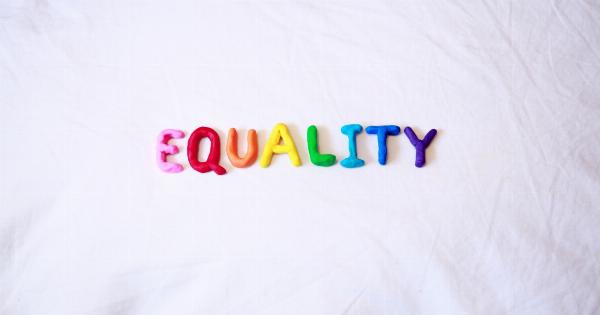A loveless and unattached relationship refers to a partnership where there is a lack of love, affection, or emotional connection.
It is a situation where two people are together but do not experience the deep emotions and intimacy usually associated with a romantic relationship. Such relationships can be draining, unfulfilling, and may leave both partners feeling lonely and dissatisfied.
Signs of a Loveless and Unattached Relationship
1. Lack of emotional support: In a loveless and unattached relationship, partners often feel unsupported emotionally. They may not receive the validation, understanding, or empathy they need from their significant other.
2. Absence of affection: Physical affection, such as hugging, cuddling, or holding hands, is crucial in maintaining a healthy romantic relationship. However, in a loveless and unattached relationship, physical intimacy may be minimal or non-existent.
3. Lack of communication: Effective communication is the foundation of any successful relationship. In a loveless and unattached relationship, partners may find it difficult to express their needs, desires, or concerns with each other.
4. Emotional distance: Partners in a loveless and unattached relationship often feel emotionally distant from each other. They may not share their thoughts, feelings, or experiences, leading to a sense of isolation.
5. Decreased interest and involvement: When a relationship lacks love and attachment, partners may lose interest in each other’s lives.
They may not engage in activities together or show enthusiasm for their partner’s achievements or aspirations.
6. Lack of shared future goals: A loveless and unattached relationship often lacks a vision for the future. Partners may not make plans together or work towards shared goals and dreams.
7. Disconnection during intimate moments: Intimacy involves emotional, physical, and sexual connection. In a loveless and unattached relationship, partners may feel disconnected during intimate moments and may not experience pleasure or satisfaction.
8. Constant conflicts or arguments: Partners in a loveless and unattached relationship may find themselves engaging in frequent conflicts or arguments. The lack of emotional connection can make it difficult to resolve issues effectively.
9. Seeking emotional fulfillment elsewhere: When a relationship lacks love and attachment, partners may seek emotional fulfillment outside the relationship.
They may develop emotional connections with friends, colleagues, or even seek companionship in online forums or chat rooms.
10. Feelings of loneliness and unhappiness: Ultimately, individuals in a loveless and unattached relationship often experience loneliness and unhappiness. The absence of love and emotional connection can lead to a sense of emptiness and dissatisfaction.
The Causes of Loveless and Unattached Relationships
1. Lack of compatibility: Sometimes, individuals enter into relationships without considering their compatibility with their partner. This can lead to a lack of emotional connection or shared values and interests.
2. Communication issues: Poor communication or unresolved conflicts can contribute to a loveless and unattached relationship. When partners don’t effectively communicate their needs or concerns, it creates a rift between them.
3. Emotional baggage: Past traumas, unresolved emotional wounds, or personal insecurities can hinder an individual’s ability to form a deep emotional connection with a partner.
4. Neglect: Many relationships suffer from neglect due to busy schedules, work commitments, or other distractions. Neglecting the relationship can erode the love and attachment between partners.
5. Changing priorities: As individuals grow and develop, their priorities may shift, causing a lack of alignment with their partner and resulting in a loveless relationship.
6. Infidelity: Cheating or infidelity can severely damage the bond between partners, leading to a loveless and unattached relationship.
7. Loss of trust: Trust is vital for a strong and connected relationship. Betrayal, lies, or broken promises can destroy trust and cause partners to detach emotionally from each other.
8. Unresolved issues: Lingering issues from the past, such as unresolved conflicts or unhealed wounds, can keep partners emotionally distant from each other.
9. Lack of effort: Relationships require effort and investment from both partners. When one or both partners stop putting in the necessary effort, the relationship can become loveless and unattached.
10. Incompatible love languages: Love languages refer to how individuals prefer to give and receive love. When partners have different love languages and do not understand each other’s needs, it can lead to a lack of emotional connection.
Impacts of Loveless and Unattached Relationships
1. Emotional distress: Being in a loveless and unattached relationship can cause emotional distress, leading to feelings of sadness, frustration, or even depression.
2. Lack of growth and fulfillment: Without emotional connection and support, individuals may feel stagnant and unable to grow personally or professionally.
3. Loneliness: Partners in a loveless and unattached relationship often experience profound loneliness, even when they are physically together.
4. Reduced self-esteem: The absence of love and emotional connection can negatively impact self-esteem and self-worth.
5. Decreased overall life satisfaction: A loveless relationship can significantly impact an individual’s overall life satisfaction and happiness.
6. Increased likelihood of infidelity: When partners feel unfulfilled emotionally, they may seek emotional or physical intimacy elsewhere, increasing the risk of infidelity.
7. Negative impact on physical health: Emotional distress from a loveless relationship can manifest physically, leading to issues like insomnia, higher levels of stress, or even compromised immune function.
8. Inability to form deep relationships: Being in a loveless and unattached relationship can create barriers to forming deep and meaningful connections with others.
9. Unresolved conflicts and resentment: Lack of emotional connection and unresolved issues can lead to continual conflict and feelings of resentment between partners.
10. Impact on children: If children are involved in a loveless relationship, they may witness and be impacted by their parents’ lack of emotional connection and affection, potentially affecting their own relationships in the future.
How to Address Loveless and Unattached Relationships
1. Communicate openly and honestly: Effective communication is key in addressing any relationship issues. Express your feelings, concerns, and desires to your partner openly, respectfully, and honestly.
2. Seek professional help: Couples therapy or counseling can provide a safe space to address underlying issues and learn effective communication and relationship skills.
3. Invest time and effort: Relationships require active investment from both partners. Make time for each other, engage in shared activities, and show genuine interest in your partner’s life.
4. Practice empathy and understanding: Seek to understand your partner’s perspective and validate their feelings. Show empathy, even when you may not necessarily agree with their point of view.
5. Address emotional baggage: Individual therapy can help you work through past traumas or emotional wounds that may be affecting your ability to form deep connections.
6. Reconnect through intimacy: Physical and emotional intimacy are closely connected. Focus on rebuilding the emotional and physical aspects of your relationship.
7. Prioritize self-care: Take care of your own physical and mental well-being. When you feel good about yourself, you are better equipped to contribute positively to the relationship.
8. Evaluate compatibility: Reflect on whether you and your partner are truly compatible in terms of values, interests, and long-term goals. Sometimes, accepting incompatibility is the best choice for both individuals.
9. Reinforce trust: Rebuilding trust takes time and consistent effort. Be honest, reliable, and transparent with your partner to restore a sense of trust in the relationship.
10. Be open to change: Relationships evolve over time, and individuals change as well. Be open to the possibility that the relationship may need to shift or come to an end for both partners’ growth and happiness.


























